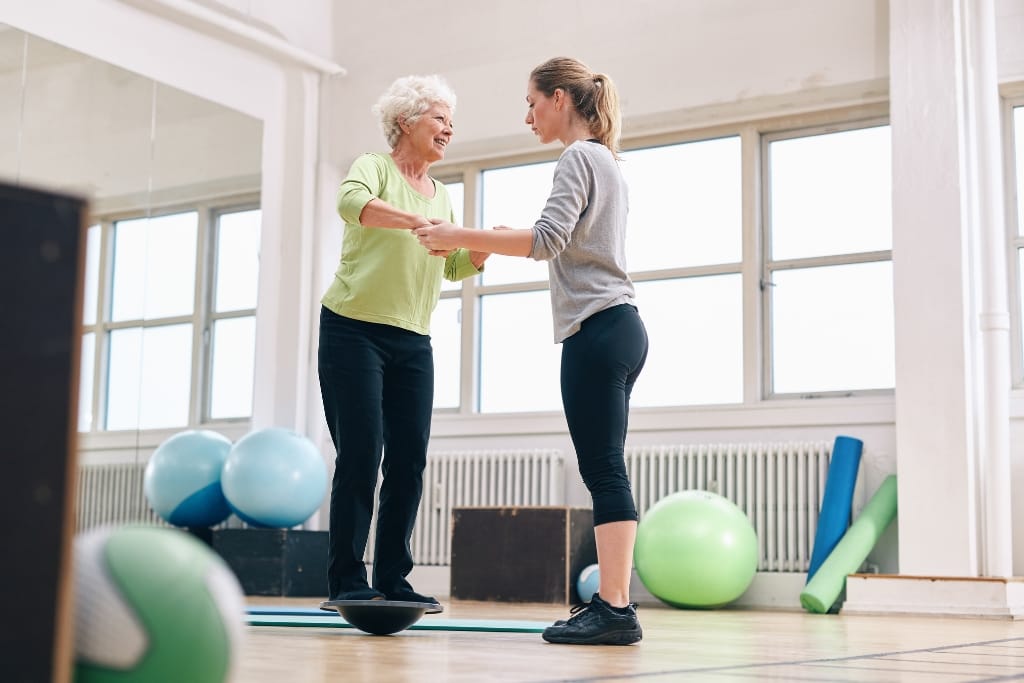Recovering from a stroke can feel overwhelming, especially when simple tasks like walking or standing become challenging.
Balance problems affect up to 80% of stroke survivors, making everyday activities more difficult and increasing the risk of falls.
The good news? Your brain has remarkable healing abilities. With the right approach and consistent effort, you can regain stability and confidence in your movements.
This article explores 11 proven methods to help restore your balance after a stroke, from professional therapies to practical home exercises.
Understanding Balance After Stroke
Balance relies on three key systems working together: your inner ear, vision, and proprioception (your body's sense of position).
A stroke can disrupt any or all of these systems, leading to dizziness, unsteadiness, or difficulty coordinating movements.
The severity of balance issues varies greatly among stroke survivors. Some people experience mild unsteadiness, while others face significant challenges with standing or walking.
Understanding your specific balance challenges helps you choose the most effective recovery strategies.
1)) Work With A Physical Therapist
Professional physical therapy forms the foundation of stroke recovery. A skilled therapist assesses your specific balance deficits and creates a personalized treatment plan.
Physical therapists use specialized equipment and techniques to safely challenge your balance system.
They might use parallel bars, balance boards, or computerized platforms that provide real-time feedback about your stability.
This professional guidance ensures you're practicing the right exercises at the appropriate difficulty level.
Regular sessions typically begin in the hospital and continue through outpatient care.
Many stroke survivors benefit from ongoing therapy sessions, even months after their initial stroke.
Your therapist can adjust your program as you improve, continuously challenging your balance system in new ways.
2)) Practice Standing Exercises
Simple standing exercises can significantly improve your stability. Start by standing near a wall or sturdy chair for support.
As you gain confidence, gradually reduce your reliance on support.
Try standing with your feet together, then progress to standing on one foot for short periods.
Practice shifting your weight from side to side, then forward and backward. These movements retrain your brain to control your center of gravity.
Basic Standing Progression:
- Stand with feet shoulder-width apart (30 seconds)
- Stand with feet together (30 seconds)
- Stand with one foot slightly in front of the other (30 seconds)
- Stand on one foot with support (10-30 seconds)
Always practice near a wall or have someone nearby for safety. Consistency matters more than duration—short, frequent practice sessions often work better than long, exhausting workouts.
3)) Strengthen Your Core Muscles
Your core muscles act like a natural corset, providing stability for your entire body. Stroke can weaken these muscles, making balance more difficult.
Core strengthening doesn't require intense workouts. Simple exercises like seated marching, where you lift one knee at a time while sitting, can be highly effective.
Wall push-ups, modified planks, and gentle trunk rotations also help rebuild core strength.
Focus on exercises that engage your deep abdominal muscles, back muscles, and pelvic floor.
These muscles work together to maintain your posture and stability during movement.
>write a Pro-Tip about the benefits of investing in abdominal workout equipment to help develop abs in the comforts of one's own home to help regain balance after a stroke
Pro-Tip: Investing in quality abdominal workout equipment, such as stability balls, resistance bands, or abdominal rollers, can significantly enhance your ability to strengthen your core from the comfort of your own home.
These tools are versatile, easy to use, and can aid in safely rebuilding your abdominal muscles, which play a critical role in improving balance and stability after a stroke.
Incorporating this equipment into your recovery routine promotes gradual progression, making it easier to achieve long-term results.
4)) Incorporate Visual Exercises
Many stroke survivors experience visual changes that affect balance. Your brain relies heavily on visual input to maintain stability, so vision exercises can improve your overall balance.
Practice tracking objects with your eyes while keeping your head still. Try looking up and down, then side to side, in slow, controlled movements.
Eye exercises help retrain the connection between your visual system and balance control.
Consider working with an occupational therapist who specializes in vision therapy.
They can identify specific visual deficits and recommend targeted exercises to address them.
5)) Use Assistive Devices Appropriately
Walkers, canes, and other assistive devices can provide crucial support during recovery. However, using them correctly is essential for maximum benefit.
A properly fitted cane should reach your wrist when your arm hangs naturally at your side.
Hold it in the hand opposite to your weaker leg. For example, if your left leg is weak, hold the cane in your right hand.
Four-wheeled walkers offer more stability than standard walkers and reduce the risk of falls.
Some models include seats, allowing you to rest when needed. Your physical therapist can help you choose the right device and teach you proper techniques.
6)) Practice Tai Chi Or Gentle Yoga
Tai Chi and gentle yoga combine balance training with mindfulness and relaxation.
These practices emphasize slow, controlled movements that challenge your balance system safely.
Research shows that Tai Chi can reduce fall risk and improve confidence in stroke survivors.
The flowing movements help retrain your brain's balance pathways while building strength and flexibility.
Many communities offer Tai Chi or yoga classes specifically designed for stroke survivors.
If attending classes isn't possible, consider following along with online videos designed for people with balance challenges.
7)) Challenge Your Balance Progressively
As your stability improves, gradually increase the difficulty of your balance exercises.
This progressive challenge helps your brain continue adapting and improving.
Start with stable surfaces, then progress to slightly unstable ones like foam pads or cushions.
Practice balance exercises with your eyes closed once you're comfortable with your eyes open.
This removes visual input and forces your other balance systems to work harder.
Add dual-task activities, such as counting backward while standing on one foot.
This mimics real-life situations where you need to maintain balance while thinking about other things.
8)) Address Sensory Issues
Stroke can affect sensation in your feet and legs, making it harder to feel the ground beneath you.
This reduced sensation impacts your balance and increases fall risk.
Spend time walking barefoot on different textures when safe to do so. Try standing on grass, sand, or textured mats.
These experiences help retrain your sensory system and improve proprioception.
Massage your feet and legs regularly to improve circulation and sensation. Use different textures, like rough towels or massage balls, to stimulate nerve pathways.
9)) Manage Medications And Side Effects
Some medications can affect balance and increase dizziness. Blood pressure medications, anti-seizure drugs, and certain antidepressants may cause balance problems.
Work closely with your healthcare team to manage medication side effects. Never stop taking prescribed medications without medical supervision, but discuss any balance-related concerns with your doctor.
Keep a symptom diary, noting when you feel most unsteady. This information helps your healthcare team identify patterns and adjust treatments accordingly.
10)) Create A Safe Home Environment
Environmental modifications can prevent falls and build confidence in your daily activities.
Remove tripping hazards like loose rugs, electrical cords, and clutter from walkways.
Install grab bars in bathrooms and stairways. Ensure adequate lighting throughout your home, especially in hallways and stairs.
Consider motion-activated lights for nighttime safety.
Keep frequently used items within easy reach to avoid overreaching or climbing. A well-organized, safe environment allows you to focus on recovery rather than worrying about hazards.
11)) Stay Consistent And Patient
Balance recovery takes time, and progress often comes in small increments.
Celebrate minor improvements and stay committed to your exercise routine.
Set realistic, achievable goals with your healthcare team. Rather than focusing on perfect balance, aim for functional improvements that enhance your daily life.
Being able to stand while brushing your teeth or walk to the mailbox safely represents significant progress.
Consider joining a stroke support group where you can share experiences and learn from others facing similar challenges.
The encouragement and practical tips from fellow survivors can be invaluable.
Conclusion
Regaining balance after a stroke requires patience, consistency, and the right combination of strategies.
While the journey may feel challenging, remember that your brain's ability to adapt and heal continues long after your stroke.
Start with one or two strategies that feel manageable, then gradually add others as you build strength and confidence.
Work closely with your healthcare team to ensure you're using techniques appropriate for your specific situation.
Your balance may never return to exactly what it was before your stroke, but significant improvements are possible.
Many stroke survivors go on to live active, independent lives with the right support and commitment to recovery.
Take the first step today by discussing these strategies with your healthcare team.
They can help you create a personalized plan that addresses your specific balance challenges and goals.
Download Our Free E-book!








